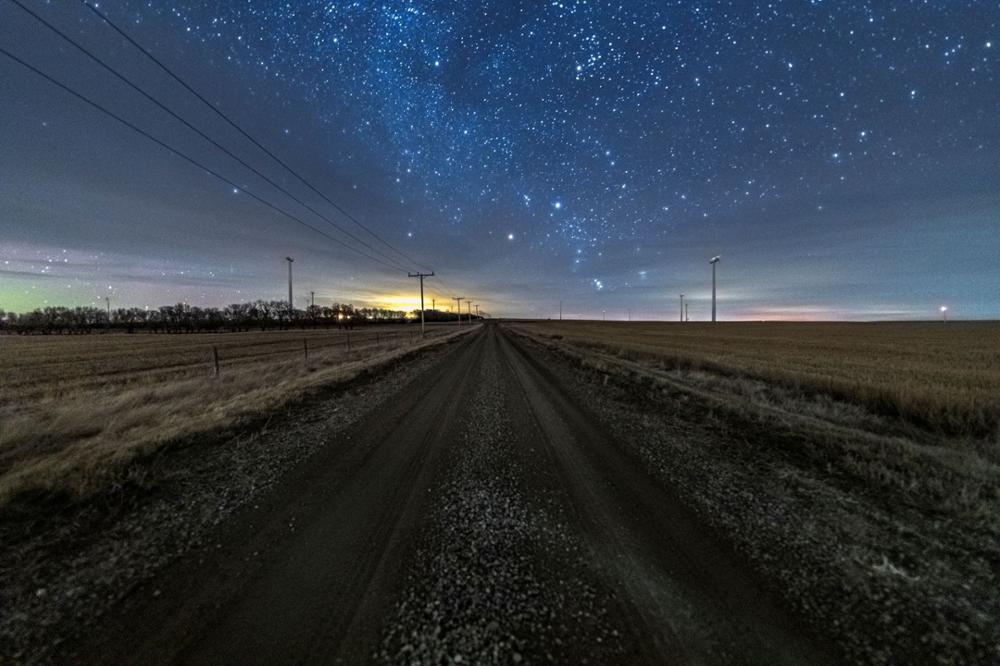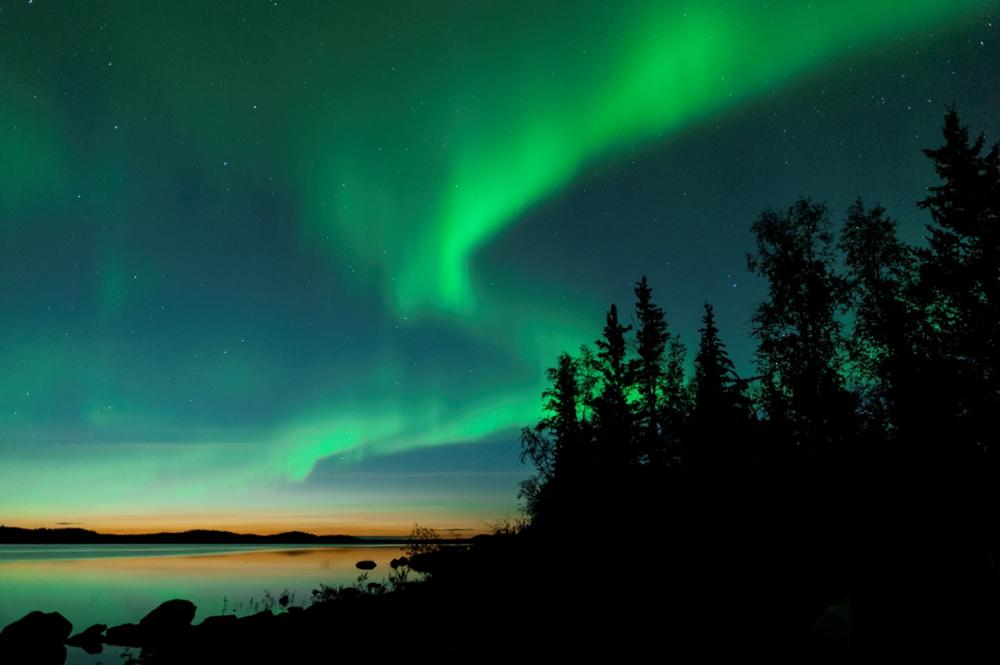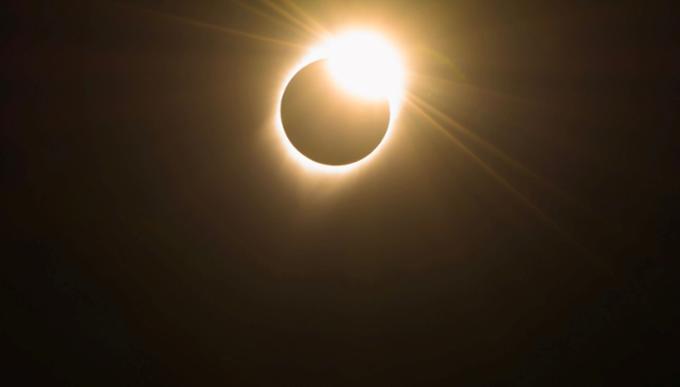Echoing Pink Floyd's iconic words, “Everything under the sun is in tune, but the sun is eclipsed by the moon.” Step into a cosmic groove and witness the dance between Earth’s sun and our moon during the 2024 Great North American Solar Eclipse.
As the solar eclipse approaches, anticipation mounts for the multitude of people set to witness a total eclipse, given its trajectory across Mexico, the United States, and the eastern portion of Canada. While Saskatchewan may miss the full spectacle of a total eclipse, we can still expect a tantalizing glimpse of a partial eclipse.
We are changing the sky. There are 60 more satellites being launched every week, changing the night sky for everyone worldwide. — Dr. Sam Lawler, Associate Professor of Astronomy at the University of Regina’s Campion College
Question: What will the April 8 solar eclipse look like?
“From our location, it will look like the sun has a bite taken out of it,” says Dr. Samantha Lawler, University of Regina Associate Professor of Astronomy (Campion College).
Question: What in the world is a Solar Eclipse?
According to Lawler, a solar eclipse is a total coincidence. As it so happens, we are lucky to find ourselves living in a time when the moon and the sun are the exact same size. Why? Well, when the moon moves between the earth and the sun, it blocks the sun and creates a total eclipse.
Question: Do other planets have eclipses?
Unlike other planets in the solar system, an eclipse is a phenomenon unique to Earth. Lawler explains that on other planets such as Mars, an eclipse isn’t possible because its moons are too small to block out its sun. She adds, “For example, Venus doesn’t even have a moon, so Earth is very special.”

In fact, this is a significant chapter in Earth’s history. According to Lawler, the moon is slowly inching away from us year by year, but Lawler advises that there is no need to fear just yet.
"The moon isn't going anywhere any time soon,” says Lawler. She reassures us that its movement is gradual, akin to the incremental growth of fingernails — a subtle process we barely notice. Over time, however, the changes accumulate and millions of years from now Earth’s moon will eventually drift too far to completely block out our sun, resulting in what's known as an Annular Eclipse. Instead of a total eclipse, our descendants will see only a ring of sunlight around the moon.
Question: Is the solar eclipse dangerous?
With every solar eclipse comes the cautionary refrain, "Don't look at the sun.” Sound advice; however, Lawler recommends common sense and following guidelines from those in the know. For instance, NASA warns against looking at the sun but rather than instilling fear, they advocate for responsible viewing practices, encouraging the use of proper eye protection during eclipses.
“Don’t be afraid, it’s not shooting lasers at you,” jokes Lawler. Instead, she suggest practicing awareness. Lawler highlights that risks can arise when the sun is between 80-90% covered because despite being less bright, its intensity remains. However, Lawler assures, "With proper protection or a pinhole, you don't even have to look at the sun.”
Question: What’s the best way to watch the eclipse?
The beauty of viewing a solar eclipse lies in its accessibility; no complex equipment needed. Lawler recommends crafting a basic pinhole projector using just a piece of cardboard. Simply poke a hole in the cardboard and with your back to the sun, hold the cardboard over a flat surface like concrete or a sheet of paper, and you’ll see a projected image of the sun.
Question: What’s next – what else should we watch for in our skies?
With a universe so infinite, we’ve got more to look forward to than just the April 8 eclipse. Among them, Lawler is most excited to see more auroras this year. She explains that we are coming up to solar maximum, meaning our sun is more active, increasing solar storms and sunspots on the sun's surface. As a result, auroras will be more vivid, and particularly visible to those in Saskatchewan. “We are in one of the best places in the world to see auroras because we will actually get to experience full darkness in the summer,” says Lawler.

Question: Your research involves satellite pollution. What’s the big deal?
In the midst of solar auroras and the upcoming eclipse, Lawler remains mindful of how our sky is changing. Collaborating with research colleagues, she is currently researching the visibility of satellites during a total eclipse—a subject that resonates deeply with her due to a profound concern about the impact of human actions affecting the sky.
“It's happening right now. We are changing the sky,” explains Lawler. “There are 60 more satellites being launched every week – changing the night sky for everyone worldwide. And everyone should be aware it’s being changed by a private, for-profit company and there are many other companies lined up to do the same thing.”
While satellite pollution and its causes can feel like overwhelming topics, the enthusiasm surrounding events like the solar eclipse provides Lawler with the perfect opportunity to engage and educate people interested in learning more about the sky.
Lawler remains steadfast in her relentless research and advocacy to preserve the skies, ensuring that future generations can marvel at heavenly phenomena humans have been witnessing for thousands of years – from the constellations and the Milky Way in the night sky to solar eclipses and auroras.
Question: Can we watch the eclipse with you?
You can watch the April 8 solar eclipse from a special location with some very special guides. Join the University of Regina’s Physics Department on April 8 from Noon to 2 p.m. right in the heart of campus on the U of R’s Dr. Lloyd Barber Academic Green, just outside the Paskwāw and Wakpá towers. Telescopes equipped with solar filters and eclipse glasses will be available for the public.
Did you know that physics is the basis of all other sciences and involves the study of space, time, and energy? Explore the many programs offered by U of R’s Department of Physics within the Faculty of Science.
About the University of Regina
2024 marks our 50th anniversary as an independent University (although our roots as Regina College date back more than a century!). As we celebrate our past, we work towards a future that is as limitless as the prairie horizon. We support the health and well-being of our 16,700 students and provide them with hands-on learning opportunities to develop career-ready graduates. Our research enterprise has grown to include 21 research centres and 12 Canada Research Chairs and brings in more than $51.2 million in funding annually. Our campuses are on Treaties 4 and 6 - the territories of the nêhiyawak, Anihšināpēk, Dakota, Lakota, and Nakoda peoples, and the homeland of the Michif/Métis nation. We seek to grow our relationships with Indigenous communities to build a more inclusive future.
Let’s go far, together.
